
9 minute read
Anchoring Etiquette
from July 2020 48° North
by 48° North
4 KEYS TO BEING A GOOD NEIGHBOR ON THE WATER
by Andy Cross
Yahtzee, the author’s Grand Soleil 39, anchored in magnificent Thumb Cove near Seward, Alaska.
Whether it’s the most popular bay in the San Juan Islands, a quiet cove in south Puget Sound, a tiny nook in British Columbia or a mountain-flanked fjord in Alaska, anchoring your own boat to bask in the solitude of your surroundings is one of the most rewarding parts of cruising. But the ability to anchor and appreciate that perfect spot you’ve chosen comes with a responsibility to those with whom you share the water.
While many boaters understand and adhere to the common norms of anchoring etiquette, it’s always good to review your own practices—especially as summer brings full anchorages, and pandemic restrictions motivate folks to anchor out more than they typically might. Though the topic can be a hot button issue for boaters, with some understanding and a helpful attitude, it doesn’t need to be.
Here are four keys to being a better anchor neighbor, no matter where you drop the hook.
FIRST TO SET THE HOOK, FIRST TO SET THE TONE
Google “Anchoring Etiquette” and nearly every article starts with a variation of this theme, and for good reason. Proper anchoring starts with understanding the basic protocol of who goes where. The bottom line here is that the first boat to enter the anchorage, and then subsequent boats after that, set the precedent for anchoring procedures. The last boat (or boats) into the anchorage, especially in tight anchorages, need to adhere to the general setup of those who already have their hooks down.
But what does that mean, exactly? When you enter an anchorage, observe how the wind and current are setting the boats and how far apart they are spaced. Are any boats stern tied to shore? Are there boats with multiple anchors deployed? Or, how much chain or rode do boats appear to be using and where are their anchors set?
The problem with the last two questions is that the answers can be difficult to discern. In order to gain as much information as possible, it’s not uncommon to slowly approach another boat and politely ask about how they’re set up, where their anchor is and how much rode they have out. Throughout our years of cruising, we’ve always had friendly and grateful responses to such inquiries. And in congested anchorages, I always appreciate the consideration when someone takes the time to ask a few questions before hastily plopping down their anchor.
Recently, when we were the last boat coming into an anchorage, we found most boats were anchored with a single hook from the bow. But, upon closer inspection and a word with another skipper, it was revealed that a J/46 had a stern anchor set so they wouldn’t swing too close to a rocky shoreline. With that information, we were able to avoid anchoring too close to them and instead set our hook behind every other boat that was already anchored.
Setting the precedent then leads us into one of the most important elements of anchoring; that of spacing between boats.
DON’T BE A SPACE INVADER
Anyone who has anchored even a few times knows that one of the most aggravating cruising experiences is when a boat comes in and anchors too close. It’s just plain awkward, and most of the time it’s completely unnecessary and avoidable.
The question of ‘How close is too close?’ is dictated by how many boats are in the anchorage, what their anchoring setups are, and how much space is available. In tight anchorages with less room, it’s a natural consequence for boats to anchor closer together. Conversely, in larger anchorages, boats have room to spread out. Ideally, you can look at how far apart boats are spaced and then try to match this distance or give even more room. Similar to our personal bubble ashore, we have an anchoring bubble that, when invaded, causes a bit of discomfort.
Anchoring too close is rarely done on purpose. A common cause of getting into another boat’s bubble is dropping the hook in front and then settling back on top of them. Don’t be that boat. Anchor behind, or well in front if space allows, and try to stagger your spacing to one side or the other to avoid being directly off someone’s bow. Of course, that alignment may change as the boats swing with the wind or current, but the spacing should remain consistent.
The important thing is: If you’ve set your anchor too close to a boat that was there before you, the onus is on you to move first. As a fellow cruising friend says, “If you think you might be too close, you probably are. Move.”
Another cause of being too close is using a different scope than another boat, thereby creating a larger swing room than your neighbors. Boats that carry all chain typically anchor with a 3- or 4-to-1 chain to depth ratio, also known as scope. If the
Anchored boats with good spacing in Howe Sound, BC.
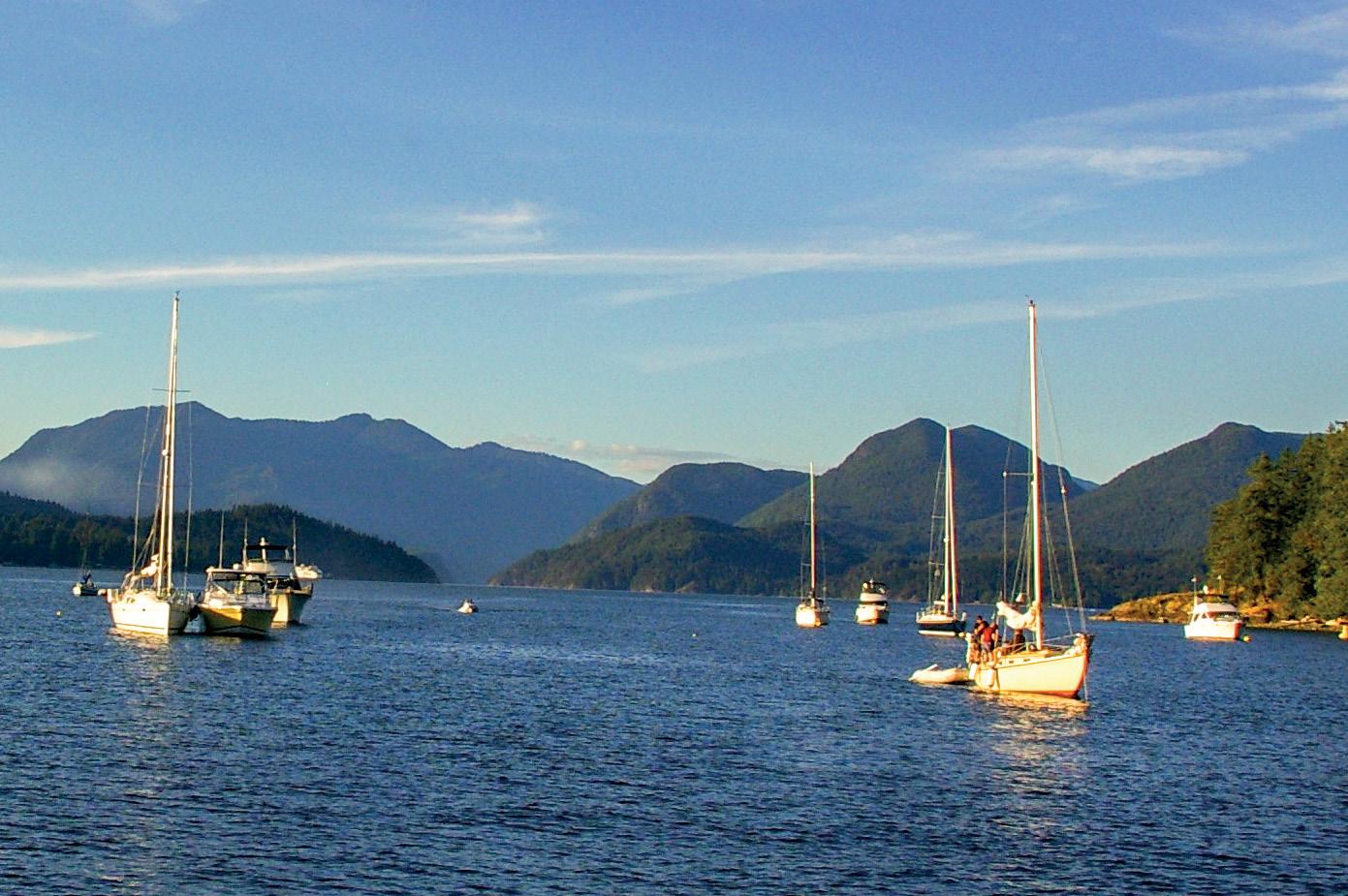
wind is calm, they will likely be sitting with the chain dropping straight down and then swing around that because the chain is heavy. Boats with mostly rope rode usually go for a 7-to-1 scope and, because the rode is lighter, will tend to “walk” around the anchorage with the wind and current. That can be a problem when anchoring near each other.
This has happened to us on numerous occasions in the Pacific Northwest, with the most memorable being in Bedwell Harbour, BC. We were anchored with four or five other boats that were all using chain and a 20-something-foot cutter came in and anchored with A LOT of rope rode amongst us. They then proceeded to walk around the anchorage in a big circle coming precariously close to us, then another boat, then another boat, over and over.
Since they were the last boat in, they were politely asked to move—which they obliged. Had they noticed they were anchoring near boats with all chain, they may have saved themselves the hassle and anchored farther away to begin with. On the contrary, had they been the first boat in, the boats with all chain would need to see their rode and anchor farther away to accommodate for the walk.
AVOID THE “HERD MENTALITY”
From the South Sound to the grandeur of Alaska, one of the great things about cruising the Salish Sea and Inside Passage is the opportunity to find a pristine spot and be the only boat in an anchorage. But sometimes that serene spot can get spoiled
It is best to offset your position to one side of other boats; and if given a choice, anchor behind a boat that is already there rather than in front of it, as Journeyman did here in Prevost Harbor on Stuart Island.
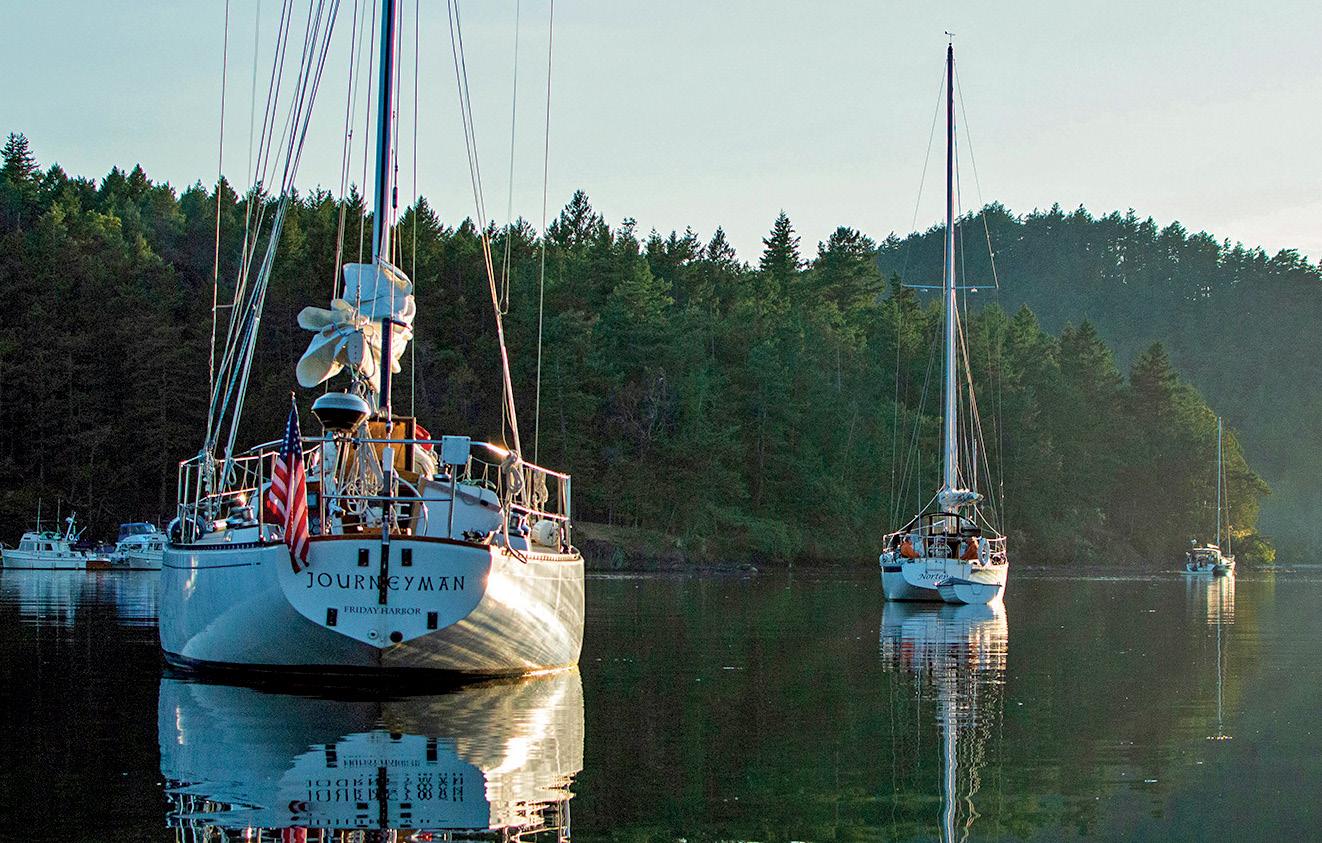
by even one other boat. As we say, “Two boats can be a crowd.”
Sometimes referred to as the “magnet effect”, what I call the herd mentality is when you’ve found that peaceful spot by yourself and another boat comes and anchors right next to you. Inevitably, another will then do the same. In small coves with limited room, this is to be expected and shouldn’t cause any ill will. But in larger bays with plenty of room to anchor, there is generally no need to anchor right next to someone who is already there.
Simple anchoring etiquette suggests that if you come into an anchorage with only one or two other boats and there is plenty of room, anchor far away. This sort of harkens back to the idea of having an anchoring bubble, the closer you get to someone, the more uncomfortable it’s potentially going to be. While some boaters’ bubbles are larger than others, it is a good general rule to presume that people would like the maximum amount of space and privacy available.
BE A GOOD NEIGHBOR
Most of the following should go without saying, but a gentle reminder from time to time doesn’t do any harm. Please be courteous to one another and think about how your actions may affect those anchored around you. This is especially true when lots of boats are trying to share a single anchorage and its adjacent shoreside attractions and amenities.
When entering an anchorage, do so at an appropriate speed so as not to create an excessive wake. The same goes for using your dinghy. It’s great that you can go fast, but you don’t necessarily need to buzz close to nearby boats every time you go to and from shore.
Remember that, particularly in calm conditions, sound travels better over water. That being the case, the incessant barking of a dog, loud music, excessively boisterous conversations, and dreadful generator noise will all feel amplified to your neighbors.
Being a good neighbor in the anchorage doesn’t just apply to the other boats around you, it also extends to your time ashore. Respect private property; utilize pumpout and garbage facilities; leave your dinghy in the appropriate place; keep your dog on a leash at the dinghy dock and in parks and spaces where it’s required, and please pick up after them. It’s simple stuff that helps to ensure enjoyment and continued access for all of us.
Overall, anchoring etiquette comes down to being a courteous and spatially-aware boater. Everyone is out on the water to have a good time and experience the things that make boating in the Pacific Northwest so incredible. By being respectful and conscientious, we can all share and enjoy one of the best parts of spending time on our boats—peacefully swinging on our own hook.
After spending nearly three years cruising Alaska, Andy and his family sailed south for warmer climes and have been in Mexico since fall 2019.
32 GOOD NEIGHBOR ANCHORING ETIQUETTE 40 PNW HERO: OLYMPIA’S SARAH HANAVAN 36 FIVE EASY SOUTH SOUND STOPS
JULY 2020 TODAY! SUBSCRIBE
PREMIUM 48° NORTH SUBSCRIPTION
Become a part of the 48° North crew! In addition to your magazine each month, with this exciting new subscription offering, you’ll also be supporting 48° North in a more meaningful way. But, warmed cockles are far from the only benefit. Others include: • Discounts at Fisheries Supply Co. • One free three-day to the Port
Townsend Wooden Boat Festival ($40 value) • 10% off of Northwest Maritime
Center classes excluding Sailing Club • Discounts on registration fees for events • Cool bumper sticker and decals. • $75/year (additional fees for First
Class forwarding or International)

JUST THE MAGAZINE, PLEASE:
Our standard subscription gets you 12 months of 48° North and its associated special publications. • $39/year (additional fees for First
Class forwarding or International)
Subscribe today online: 48north.com/subscribe
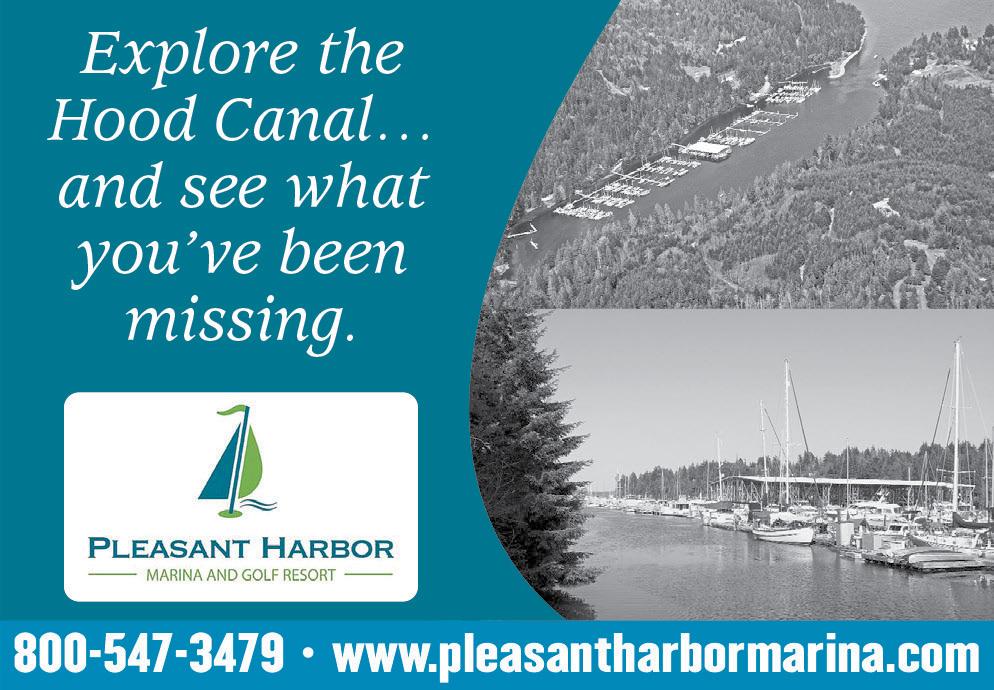

Retallick Boom Tents The last boom tent you’ll ever need!
360-796-4611 www.pleasantharbormarina.com .

Complete coverage protects boat & bungees for long life. Stress is distributed throughout the tent instead of just at the corners for better security & long tent life. Stays go through the fabric no matter the configuration. Made from high grade marine fabric for mold, mildew, and water resistance.
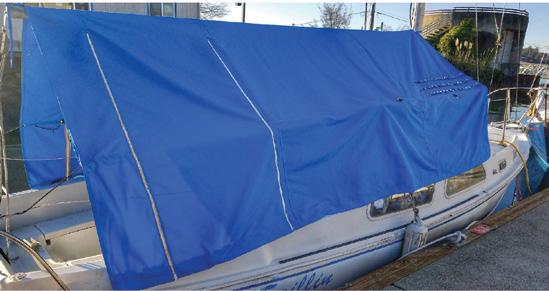
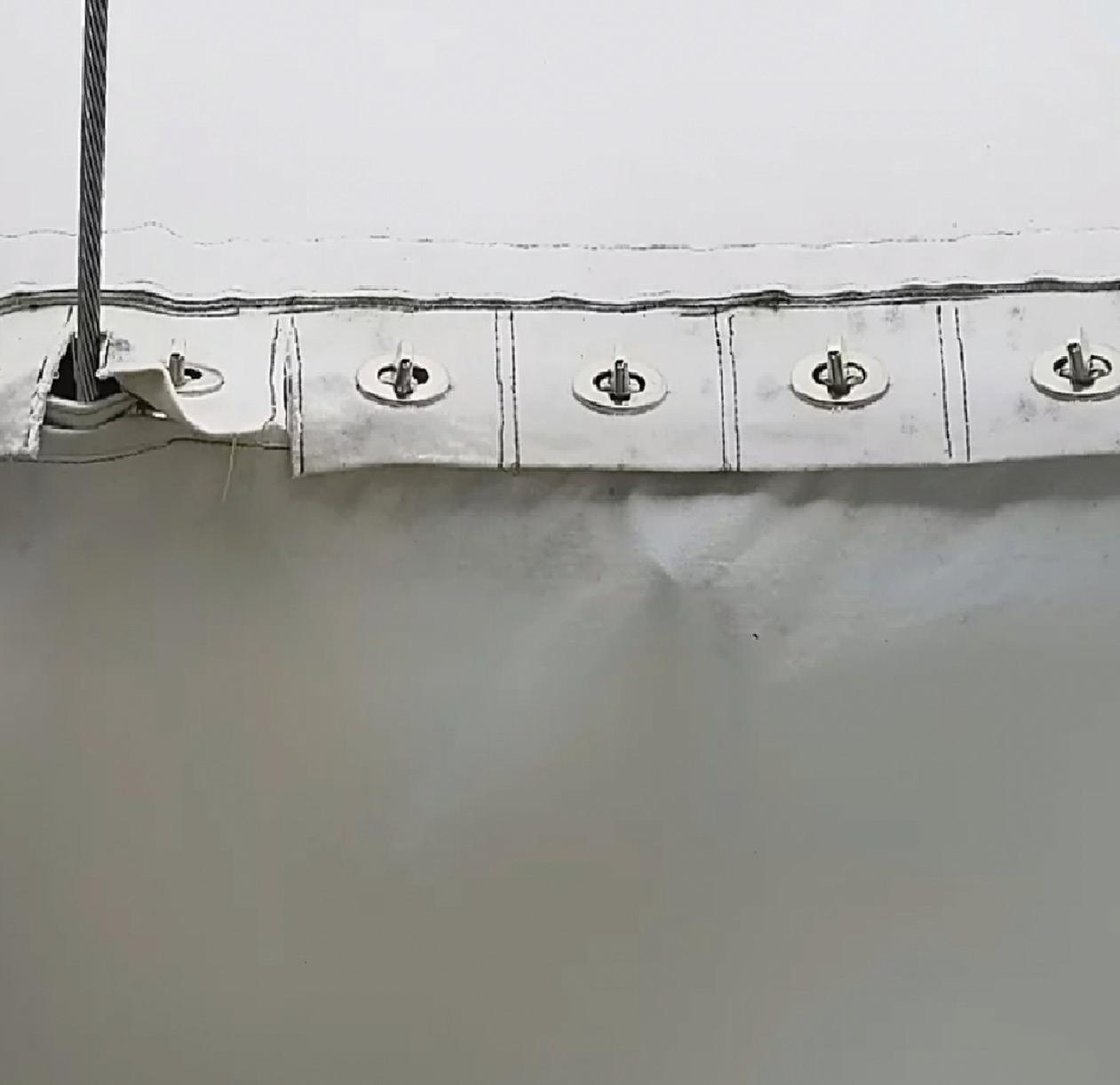
Retallick Industries 360-900-6585 707 Sidney Pkwy #14 Orchard, WA 98366









